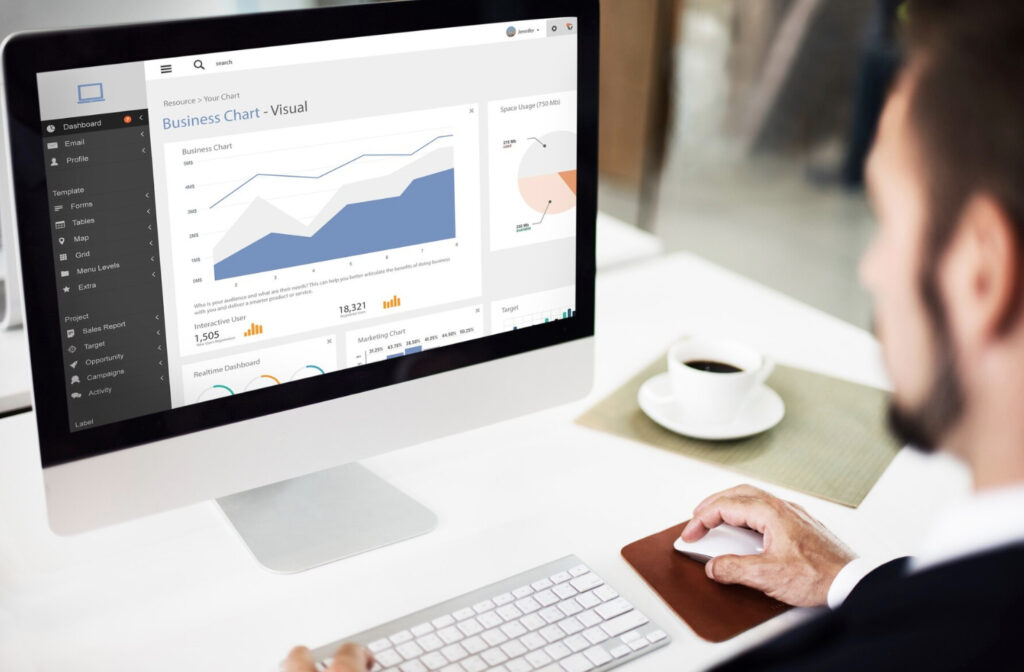In today’s data-driven world, the ability to interpret and visualize your website analytics is crucial for making informed decisions. When you’re managing a WordPress website, it’s important not only to gather data but to present it in a way that drives action. That’s where engaging reports in WordPress Analytics come into play.
By leveraging the right tools and techniques, you can transform complex data into visually appealing reports that help you and your team understand performance trends, spot opportunities, and make improvements quickly. In this article, we’ll guide you through the process of creating engaging and insightful reports in WordPress Analytics to ensure you get the most out of your data.
Why Reporting in WordPress Matters
Creating insightful and engaging reports in WordPress Analytics can have a significant impact on your business. Reports are not just about reviewing numbers; they are about converting raw data into meaningful insights that can be acted upon. Whether you’re tracking user behavior, sales performance, or traffic trends, well-crafted reports allow you to understand what’s working and what’s not, and more importantly, where to direct your efforts moving forward.
WordPress Analytics tools provide comprehensive reporting options that can track everything from page views and bounce rates to more specific data points such as conversion rates and customer demographics. However, the challenge is ensuring that this data is presented clearly and efficiently. Engaging reports help you turn those mountains of data into easily digestible insights, which ultimately leads to better decisions.
The Importance of Data-Driven Decisions
Data-driven decisions are essential for any successful business. When you have access to reliable data and visualize it in an engaging way, you reduce the risks associated with decision-making. For example, by tracking key performance indicators (KPIs) such as conversion rates and customer lifetime value, you can identify what’s driving your success and what needs improvement.
By consistently reviewing this data, your team can pinpoint areas where small changes may lead to significant results. Over time, data-driven strategies help refine your website, improve user experience, and increase your bottom line.
Enhancing User Experience with Visualized Reports
Well-designed reports that rely on clear visuals help enhance the overall user experience. These reports are easier to interpret, especially for stakeholders who may not be as familiar with the raw data. Instead of pouring over spreadsheets full of numbers, stakeholders can focus on understanding trends and making decisions based on well-visualized insights.
Visualizing your data using charts, graphs, and tables in WordPress Analytics not only simplifies complex data but also makes it more likely that teams will take action based on the findings. This is why focusing on engaging reports in WordPress Analytics is so crucial—it’s the difference between insight and overload.
Tools and Plugins to Visualize Data in WordPress Analytics
To create engaging and visually appealing reports in WordPress Analytics, choosing the right tools is essential. WordPress offers several plugins and tools specifically designed to enhance reporting capabilities, turning dry data into actionable insights. The flexibility provided by these plugins enables you to fully customize the look and feel of your reports while also tailoring them to suit your business needs.
From detailed Google Analytics integrations to easy-to-use drag-and-drop reporting tools, you have many options that cater to different requirements. Whether you need quick summaries or in-depth, interactive dashboards, WordPress has solutions that will help you get the most out of your analytics.
Top Plugins for Custom Reports
When it comes to visualizing data in WordPress Analytics, there are several plugins that stand out for their ease of use and functionality. Some of the best include:
- MonsterInsights: This plugin integrates Google Analytics into your WordPress dashboard, making it easier to track user behavior and generate reports without leaving the platform. It’s perfect for creating visually appealing reports that showcase website traffic, eCommerce performance, and more.
- Analytify: Analytify offers real-time data tracking and reporting features directly within WordPress. Its detailed reports on traffic, sales, and campaigns are perfect for businesses that need to monitor multiple KPIs at once.
- WPForms: Ideal for tracking form submissions, WPForms converts data into actionable insights through detailed reports. This plugin helps users understand the success rate of forms and surveys, adding another layer to your analytics strategy.
How to Choose the Right Visualization Tool
Choosing the right tool depends on your reporting needs. If your reports primarily focus on tracking user engagement and traffic, tools that integrate with Google Analytics may be your best bet. On the other hand, if you need more customization options—such as the ability to build custom dashboards or visualize sales funnels—look for plugins that offer advanced visualization features.
Understanding the type of data you’re working with and how often you need to generate reports will also influence your choice. Focus on tools that are flexible, easy to customize, and support the specific metrics you want to track.
How to Create Engaging Reports in WordPress Analytics
Now that you’ve chosen the right tools, it’s time to focus on how to create engaging reports in WordPress Analytics. A report’s engagement comes from its ability to convey complex data in a clear and accessible way. By combining useful metrics with eye-catching visuals, you can create reports that are not only informative but also visually appealing.
When crafting these reports, consider your audience. Some stakeholders may need high-level summaries, while others may require detailed breakdowns. By tailoring the layout, visuals, and overall presentation to your audience’s needs, you can ensure that everyone finds value in the data.
Customizing Report Layouts and Formats
The layout of your report is just as important as the data it presents. With WordPress Analytics tools, you can customize your reports to display specific metrics, use various visualization formats (charts, graphs, tables), and adjust the layout to fit your branding.
For instance, a sales report may benefit from a clear line graph showing sales trends over time, while a report on user demographics may use pie charts to break down different age groups or locations. By selecting the right format for each metric, you make it easier for the reader to understand the data and act on it.
Making Reports More Interactive and Insightful
Interactive elements can take your reports to the next level. By incorporating features like dynamic filters, users can drill down into specific data points without overwhelming them with too much information upfront. Additionally, interactive reports can include clickable graphs, real-time data updates, and customizable time frames, making them more flexible and personalized.
This level of interaction helps stakeholders get the specific insights they need, without having to sift through unnecessary data. In turn, this leads to faster decision-making and more targeted improvements.
Best Practices for Effective Data Reporting
While tools and customization options are important, best practices in data reporting are just as crucial. The way you present your data can make or break the success of your report. Even the most comprehensive analytics data can fall flat if it’s cluttered, difficult to understand, or overwhelming. Focus on clarity, simplicity, and accessibility when designing your reports.
Using Visuals to Simplify Complex Data
Visuals like graphs, charts, and heatmaps help to simplify complex data. By using visual aids, you can highlight important trends and make it easier for stakeholders to quickly grasp the key takeaways. However, be careful not to overwhelm your report with too many visuals—stick to the essentials that provide the most insight.
By creating engaging reports in WordPress Analytics that focus on visuals, you can transform raw data into actionable insights that lead to better business decisions.
Ensuring Reports Are Mobile-Friendly
With more people accessing content from their mobile devices, ensuring that your reports are mobile-friendly is essential. Many WordPress reporting tools come with responsive templates, making it easy for users to view and interact with reports on any device.
When reports are easy to access on mobile, stakeholders can stay informed even while on the go, making it easier to track progress and make decisions from anywhere.
In conclusion, engaging reports in WordPress Analytics play a crucial role in data-driven decision-making. By using the right tools, customizing your reports, and focusing on visual appeal and clarity, you can transform complex data into powerful insights that drive your business forward. Start visualizing your success today by creating reports that are not only informative but also engaging and actionable.


